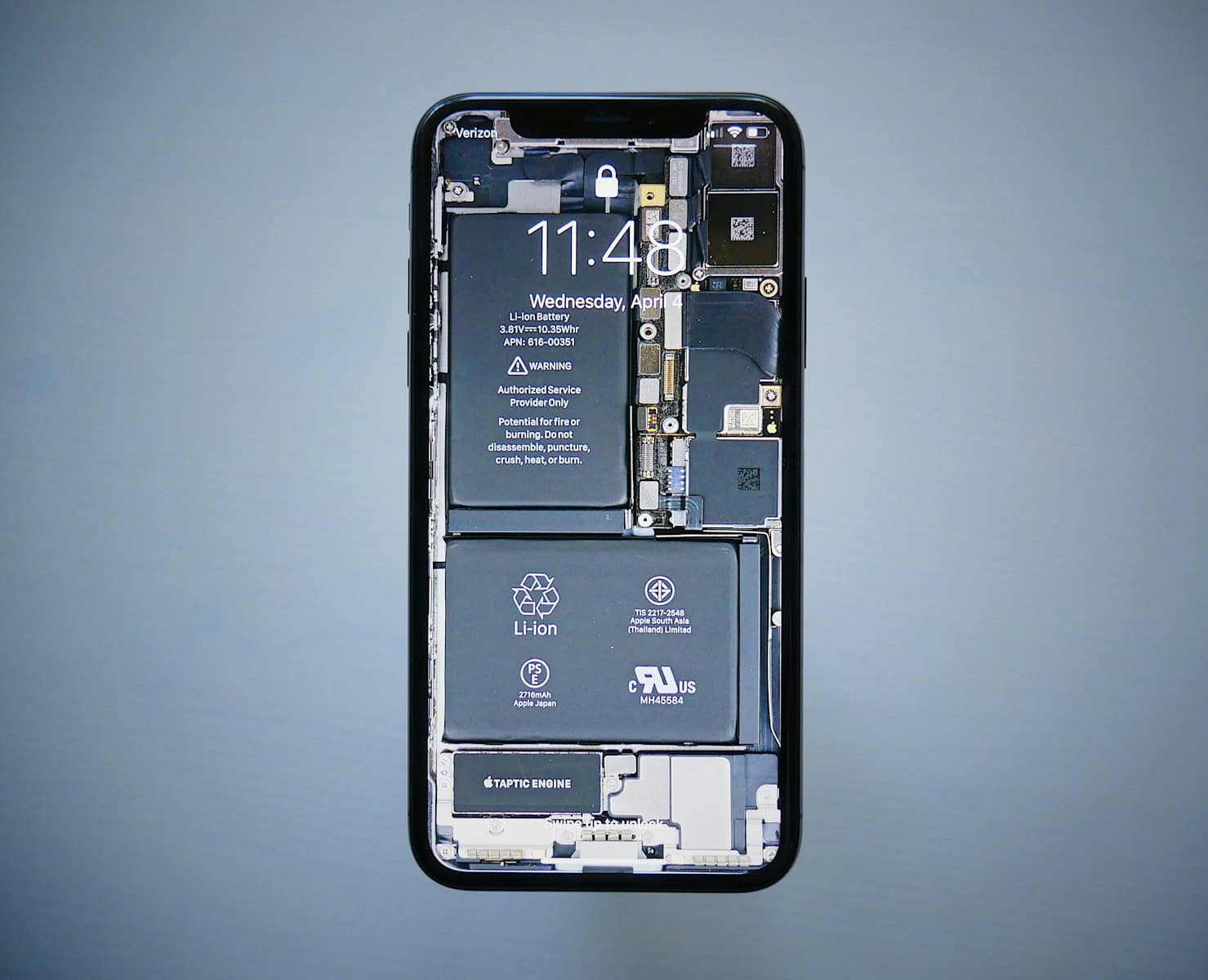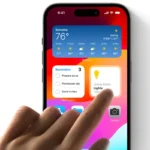Your iPhone battery is more than just a power source – it’s the lifeline of your device. Over time, all batteries wear down, but knowing how to check and maintain your iPhone’s battery health can help it last much longer. You can check your battery health by going to Settings > Battery > Battery Health, where you’ll see your maximum capacity percentage and performance capability.
Battery health affects everything from how long your phone lasts on a single charge to how well it runs your apps. When battery health drops below 80%, you might notice your phone doesn’t last as long or might shut down unexpectedly. Many iPhone users wonder when the right time is to replace their battery, and Apple recommends doing so when it reaches 80%.
Taking care of your battery isn’t complicated. Simple habits like avoiding extreme temperatures and keeping your charge level between 20-80% can make a big difference. Your iPhone also tracks your battery usage patterns, showing which apps use the most power so you can make smart choices.
iPhone Battery Health Guide: What It Means and How to Maintain It
Your iPhone’s battery health is more than just a percentage — it’s a window into the long-term performance and lifespan of your device. Understanding what battery health is, how it works, and how to preserve it can help you avoid battery-related issues and extend the usable life of your iPhone.
🔋 What Is iPhone Battery Health?
Battery Health is a feature in iOS that gives insight into your battery’s maximum capacity and its ability to deliver peak performance. It can be found under:
Settings > Battery > Battery Health & Charging
Here, you’ll see:
- Maximum Capacity (%): Reflects how much charge your battery can hold compared to when it was new. For example, 90% means your battery holds 90% of its original charge.
- Peak Performance Capability: Shows if your battery can support performance demands without unexpected shutdowns.
- Optimized Battery Charging: A feature designed to reduce battery aging by learning your daily charging routine.
⚠️ What Is a “Good” Battery Health Percentage?
- 100% – 90%: Excellent. Battery is nearly new and working as intended.
- 89% – 80%: Still good. You may notice slight reductions in battery life.
- Below 80%: Apple may recommend a battery replacement, especially if performance issues arise. AppleCare+ may cover this if you’re eligible.
🛠 Common Signs of Battery Health Decline
- Faster battery drain
- Slower performance or app lag
- Unexpected shutdowns
- Phone gets hot during simple tasks
- Long charging times or stuck charge indicators
✅ Tips to Maintain iPhone Battery Health
Here are some proven practices to help your iPhone battery stay healthy over time:
1. Avoid Extreme Temperatures
- Batteries hate heat. Avoid charging or using your phone in environments over 95°F (35°C).
- Don’t leave it in a hot car or under direct sunlight.
2. Enable Optimized Battery Charging
- Found under Settings > Battery > Battery Health & Charging.
- This slows charging at 80% until just before you need it, reducing long-term wear.
3. Avoid 0% and 100% Extremes
- Try to keep your battery between 20%–80% when possible.
- Constantly charging to 100% or letting it drain to 0% stresses the battery.
4. Use Certified Charging Accessories
- Use Apple-certified (MFi) chargers and cables.
- Cheap, third-party chargers may overheat or deliver unstable voltage.
5. Update iOS Regularly
- Apple occasionally improves power management via software updates.
6. Turn Off Background App Refresh
- Go to Settings > General > Background App Refresh and disable it for unnecessary apps.
7. Limit High-Drain Features
- Turn off Bluetooth, GPS, and 5G when not needed.
- Use Low Power Mode when your battery is low or you’re not near a charger.
🔄 When Should You Replace Your iPhone Battery?
- Battery health drops below 80% and you’re experiencing issues.
- Battery-related warnings appear in settings.
- Your iPhone shuts down unexpectedly, even with a charge.
You can check if you’re eligible for a free replacement via Apple Support or AppleCare+.
🧠 Battery Health vs Battery Life: What’s the Difference?
- Battery Life is how long your iPhone lasts on a single charge.
- Battery Health is about the overall condition of the battery after many charging cycles.
Even with a lower battery health, you can improve day-to-day battery life by adjusting your settings and usage.
🔄 iPhone Models and Battery Lifespan
Most iPhones are designed to retain up to 80% of their original battery capacity after 500 complete charge cycles (about 1.5–2 years of normal use).
📦 Final Note: Battery Replacements Are Easier Than Ever
Apple offers in-store and mail-in battery replacements. Even third-party repair shops can perform this if you’re out of warranty — just make sure they’re reputable.
Maintaining your iPhone battery health is one of the easiest ways to preserve performance and avoid the need for a new phone sooner than necessary. With the right habits, your battery can last several years without major issues.
Key Takeaways
- Check your iPhone battery health in Settings to know when it needs replacement.
- Keep your charge between 20-80% for best battery lifespan.
- Update iOS and manage background apps to improve battery performance.
Understanding iPhone Battery Health
iPhone battery health directly affects your phone’s performance and lifespan. Modern iPhones track battery health features that help users monitor when their battery might need attention or replacement.
The Basics of Lithium-Ion Batteries
iPhones use lithium-ion batteries because they’re lightweight and can store a lot of power. These batteries work by moving lithium ions between positive and negative electrodes during charging and discharging.
Unlike older battery types, lithium-ion batteries don’t have a “memory effect,” so you don’t need to fully drain them before recharging. However, they do have limitations.
Each iPhone battery is designed to hold up to 80% of its original capacity after 500 complete charge cycles. A charge cycle happens when you use 100% of your battery’s capacity, whether all at once or over several charges.
You can check your battery health by going to Settings > Battery > Battery Health. This shows your battery’s maximum capacity and peak performance capability.
Chemical Aging and Battery Lifespan
Battery aging is a natural process that happens over time. As iPhone batteries age, chemical changes inside make them less efficient at holding charge.
Two key measurements help track this process:
- Maximum capacity – Shows what percentage of the original battery capacity remains
- Peak performance capability – Indicates if your battery can deliver full power when needed
When battery health drops below 80%, Apple typically recommends replacement. This doesn’t mean your phone will stop working, but you might notice:
- Shorter battery life
- Unexpected shutdowns
- Slower performance as the iPhone tries to protect itself
Most iPhone batteries maintain good health for 2-3 years with normal use before significant decline occurs.
Factors Affecting Battery Health
Several factors can speed up or slow down battery aging:
Temperature has a major impact on battery health. Extreme heat or cold can permanently damage batteries. Apple designs iPhones to work best between 32°F to 95°F (0°C to 35°C).
Charging habits also matter. Keeping your battery between 20% and 80% is gentler than frequent full discharges or constant 100% charging.
Software updates often include power management features to help extend battery lifespan. These updates can improve how your iPhone uses power.
Newer iPhone models have better battery technology and more advanced power management systems than older ones. Each generation typically brings improvements in battery efficiency.
Using original Apple chargers and cables also helps maintain battery health by providing the correct voltage and current.
Monitoring Battery Health on iOS
iOS provides tools to help users track and manage their iPhone battery health. These features let you see how well your battery works and make changes to extend its life.
The Role of iOS in Battery Health Management
iOS includes smart features to keep your battery healthy longer. Your iPhone tracks battery health and adjusts performance to match battery condition.
When a battery ages, it might not deliver enough power during peak demands. iOS manages this by controlling maximum performance to prevent unexpected shutdowns.
The system also uses features like Optimized Battery Charging to learn your daily charging habits. This helps reduce battery aging by limiting the time your iPhone spends fully charged.
iOS updates often improve battery management. These updates fine-tune how your phone uses power based on real-world data from millions of devices.
The Battery Health & Charging feature in iOS 16.1 and later provides more advanced options for battery management.
How to Check Battery Health on an iPhone
Checking your iPhone’s battery health is simple. Go to Settings > Battery > Battery Health & Charging to see important battery information.
The Maximum Capacity percentage shows how your battery compares to when it was new. A new battery starts at 100%, and this number naturally decreases over time. Apple considers batteries healthy until they drop below 80%.
You can also see your Peak Performance Capability status. This tells you if your battery can support normal peak performance or if iOS is managing performance to prevent shutdowns.
To get a more accurate measurement of battery health, some users recommend using battery health shortcuts that analyze your iPhone’s analytics files.
For ongoing monitoring, check the Battery section in Settings. It shows which apps use the most power and helps identify battery-draining issues.
Maintaining Optimal Battery Performance
Keeping your iPhone battery healthy requires a mix of good charging habits, smart settings choices, and mindful usage patterns. The right approach can significantly extend your battery’s lifespan and improve daily performance.
Best Practices for Charging Your iPhone
Don’t let your iPhone battery drain completely before charging. Try to keep the battery level between 20% and 80% for the best battery health.
Avoid charging your phone overnight. This practice can lead to unnecessary strain on the battery. If you must charge overnight, use Apple’s Optimized Battery Charging feature, which learns your routine and waits to finish charging past 80% until you need it.
Heat damages batteries quickly. Remove protective cases while charging if they trap heat. Never leave your iPhone in hot cars or direct sunlight for extended periods.
Use official Apple chargers or certified accessories. Cheap, uncertified chargers may damage your battery’s health over time by providing inconsistent power.
Each full charge cycle (0-100%) counts against your battery’s lifespan. Partial charges are better for long-term health.
Managing Settings to Prolong Battery Life
Adjust screen brightness to a lower setting. The display is one of the biggest power consumers. Use auto-brightness to let your phone adjust based on ambient light.
Turn on Low Power Mode when you’re running low. This setting reduces background activities and processing power to extend battery life.
Check which apps drain your battery by going to Settings > Battery. Limit use of power-hungry apps or adjust their background permissions.
Use Wi-Fi instead of cellular data when possible. Wi-Fi typically uses less power than cellular connections.
Turn off location services for apps that don’t need them. Go to Settings > Privacy > Location Services to manage which apps track your location.
Enable Dark Mode if your iPhone has an OLED screen (iPhone X or newer). Dark pixels use less power on these displays.
Optimizing Device Usage to Minimize Battery Strain
Close unused apps running in the background. While iOS manages this well, very demanding apps can still drain power.
Update to the latest iOS version. Apple often includes power efficiency improvements in updates.
Reduce Screen Time by limiting unnecessary phone use. Less screen time equals less battery drain.
Manage notifications to cut down on screen wake-ups. Each time your screen lights up with a notification, it uses battery power.
Turn off features you don’t use regularly like AirDrop, Bluetooth, and Background App Refresh. These wireless functions consume power even when not actively in use.
Check your battery health periodically in Settings > Battery > Battery Health to see if it needs service. When maximum capacity falls below 80%, consider a replacement.
Troubleshooting Common Battery Issues
iPhone battery problems can be frustrating to deal with. When your phone shuts down unexpectedly or doesn’t last through the day, it’s usually related to battery health.
Addressing Unexpected Shutdowns and Performance Management
If your iPhone shuts down with battery percentage remaining, your device might be using Performance Management. This feature activates when the battery can’t deliver peak power.
To check if this is enabled:
- Go to Settings > Battery > Battery Health & Charging
- Look for “Peak Performance Capability” status
- See if Performance Management is active
You can disable Performance Management, but this might lead to more unexpected shutdowns. The feature exists to protect your device’s components when the battery weakens.
Cold weather can trigger shutdowns too. iPhones work best between 32°F and 95°F (0°C and 35°C). Using your phone in very cold conditions may cause it to shut down suddenly even with charge remaining.
App issues might also cause shutdowns. Try closing background apps or updating to the latest iOS version.
Dealing with Degraded Battery Capacity
All iPhone batteries lose capacity over time. When your Maximum Capacity drops below 80%, you’ll likely notice shorter battery life.
Signs of a degraded battery include:
- Battery draining quickly
- Phone getting unusually hot
- Need to charge multiple times daily
- Battery Health showing “Service”
You can check your battery’s health status:
- Open Settings > Battery > Battery Health & Charging
- Look at the “Maximum Capacity” percentage
- Check for any warning messages
If your battery is degraded, you have options. Apple offers battery replacement services. Many third-party repair shops also replace iPhone batteries at lower costs.
Recent iOS updates sometimes cause temporary battery drain. This usually improves after a few days as the system optimizes. If problems persist, try resetting all settings or backing up and restoring your device.
iPhone Battery Replacement Options
When your iPhone battery weakens, you have several options to replace it. Apple offers official replacement services while third-party repair shops provide alternatives at different price points.
When to Consider Battery Replacement
Your iPhone battery should be replaced when it holds less than 80% of its original capacity. This is Apple’s recommendation for optimal performance.
You can check your battery health by going to:
- Settings > Battery > Battery Health (iOS 16.0 or earlier)
- Settings > Battery > Battery Health & Charging (iOS 16.1 or later)
Signs that indicate you need a battery replacement include:
- Phone shutting down unexpectedly
- Battery draining quickly
- Phone getting hot during normal use
- Device performance slowing down
Some users prefer to wait until battery health drops to 60-70% before replacement, but performance issues typically become more noticeable below 80%.
How to Get an Official iPhone Battery Replacement
Apple provides several ways to replace your iPhone battery:
Apple Store: Schedule an appointment at your local Apple Store through the Apple website or app. Technicians will replace your battery while you wait (usually 1-2 hours).
Mail-in Service: If you don’t live near an Apple Store, you can ship your iPhone to Apple for battery replacement.
Authorized Service Provider: These are third-party shops approved by Apple to perform repairs with genuine parts.
Cost varies by model, but if you have AppleCare+ and your battery health is below 80%, the replacement is free. Without AppleCare+, battery replacement typically costs between $69-$99 depending on your iPhone model.
The process usually takes 1-3 days if mailed in, or sometimes same-day if done at an Apple Store.
Advanced Battery Features in Recent iPhone Versions
Apple has enhanced battery management in newer iPhone models with smarter features and more detailed settings. These improvements help users understand their battery health better and extend the life of their devices.
Battery Updates in the Latest iPhone Models
The iPhone 13 and iPhone 14 series come with significant battery improvements. Both models feature larger battery capacities compared to older versions. The iPhone 14 Pro models include an Always-On Display that uses special power-saving technology to show information without draining the battery quickly.
The iPhone 13 Pro Max offers one of the best battery lifespans in Apple’s lineup. It can last up to 28 hours of video playback on a single charge.
Even the compact iPhone SE (2022) has better battery management than its predecessors. The A15 Bionic chip helps it use power more efficiently.
All recent iPhones include a Battery Health screen that shows:
- Maximum battery capacity percentage
- Peak performance capability
- Battery cycle count (on newer models)
- Manufacture date
Exclusive Battery Settings in New iOS Releases
Since iOS 11.3, Apple has added more battery health tracking options. Users can now see exactly how much of their original battery capacity remains. This helps them decide when a battery replacement might be needed.
Newer iOS versions have expanded these features with:
Optimized Battery Charging: This feature learns your daily charging habits and slows charging past 80% to reduce battery aging.
Battery Health Management: This setting helps slow battery aging by limiting peak power when needed.
The latest iOS versions let users check their battery cycle count directly in settings without connecting to a computer. This number helps track battery wear over time.
Users can also see which apps use the most battery power in the last 24 hours or 10 days. This helps identify power-hungry apps that may need to be used less often.
Impacts of Accessories and External Factors on Battery Life
Your iPhone battery can be affected by various items you connect to it and the conditions around it. These factors can significantly impact how long your battery lasts between charges.
Effects of Apple Watch and iPad on iPhone Battery
When you pair an Apple Watch with your iPhone, it uses Bluetooth and background processes that can drain your phone’s battery. The constant connection between devices requires energy to maintain.
Your iPhone may lose power faster if it’s frequently sending notifications to your watch. This happens because your phone must process and transmit these alerts wirelessly.
Similarly, using your iPad with features like Handoff or Continuity can increase battery usage on your iPhone. These Apple ecosystem features keep devices in communication with each other.
Phone accessories can significantly impact battery life, not just Apple devices. Charging cables, power banks, and even MagSafe cases may affect battery performance over time.
Using accessories like MagSafe cases is generally safe but might generate extra heat during charging. This heat can potentially affect battery health in the long run.
Understanding Environmental Influences
Temperature plays a crucial role in battery health. Extreme cold or heat can harm your iPhone battery. Apple notes that storing your device in very hot conditions can damage your battery permanently.
Using your iPhone in cold weather may temporarily reduce battery life. The battery will return to normal when the device warms up to regular operating temperatures.
Strong Wi-Fi signals help your iPhone save battery by reducing cellular data usage. When Wi-Fi signals are weak, your phone works harder to maintain a connection, using more power.
Background activity from apps can drain your battery without you noticing. Apps that refresh content, track location, or sync data use power even when you’re not actively using them.
You can check which apps use the most battery by going to Settings > Battery. This shows you which programs might be worth closing when not in use.
Strategies for Extending Battery Life and Usage
Keeping your iPhone battery healthy requires a mix of smart settings and good habits. These practical tips can help you get more hours of use and maintain your battery’s health over time.
Utilization of Power-Saving Modes and Features
One of the most effective ways to save battery is to use Low Power Mode, which reduces background activity and processing power. Turn it on manually in Settings or set it to activate automatically when your battery reaches a certain percentage.
Dimming your screen makes a big difference in battery life. Either lower it manually or enable Auto-Brightness to let your phone adjust based on lighting conditions.
Watch out for temperature extremes. iPhones work best between 62° and 72°F (16° to 22°C). Avoid exposing your phone to high heat or freezing temperatures, as these can permanently damage the battery.
Consider these additional battery-saving features:
- Turn off location services for apps that don’t need them
- Disable push notifications for non-essential apps
- Use Wi-Fi instead of cellular data when possible
- Enable Dark Mode, especially on OLED screen iPhones
App Management for Efficient Battery Use
Background App Refresh allows apps to update even when you’re not using them. While convenient, it drains battery. Go to Settings > General > Background App Refresh and turn it off for apps that don’t need constant updates.
Check which apps use the most power by going to Settings > Battery. This shows your Battery Usage by App over the last 24 hours or 10 days. Look for unexpected battery hogs and limit their use or permissions.
Many third-party apps drain more battery than Apple’s built-in options. For example, using Safari often uses less power than Chrome. Be careful with social media apps that constantly refresh and video apps that use significant processing power.
Regularly close unused apps by swiping up from the bottom (or double-clicking the home button on older models) and swiping away apps you’re not actively using.
Considerations for Using iPhone in Various Environments
Your iPhone’s battery health is greatly affected by how and where you use your device. Environmental factors and device settings can significantly impact how long your battery lasts throughout the day and its overall lifespan.
Managing Connectivity and Location Services
Location Services can drain your iPhone battery quickly when constantly active. Turn off this feature when you don’t need it by going to Settings > Privacy > Location Services.
Using Airplane Mode in areas with poor reception helps preserve battery life. Your phone uses more power when constantly searching for signals in low-coverage areas.
Bluetooth connections consume energy too. Only keep Bluetooth on when actively using it with devices like headphones or car systems.
Control your Notifications wisely:
- Disable notifications for apps you don’t need updates from
- Use “Scheduled Summary” to group non-urgent alerts
- Turn off “Raise to Wake” to prevent screen activation when moving your phone
Background app refresh settings also matter. Go to Settings > General > Background App Refresh and limit it to essential apps or Wi-Fi only.
Adapting to Different Climates and Temperature Conditions
Temperature greatly affects iPhone battery health. Apple recommends keeping your device between 32° and 95° F (0° and 35° C) for optimal performance.
Hot environments are particularly harmful:
- Avoid leaving your iPhone in direct sunlight
- Never leave it in a hot car
- Remove protective cases when charging in warm conditions
In cold weather, your battery may temporarily show lower capacity. Keep your device close to your body in cold conditions to maintain normal operating temperature.
Storing your iPhone long-term requires special care. Keep it at about 50% charge and power it off completely. Choose a cool, dry place away from direct sunlight.
When traveling between different climate zones, allow your phone to adjust to new temperatures gradually before charging.
Frequently Asked Questions
iPhone battery health is a critical aspect of device performance. Understanding how to check, maintain, and know when to replace your battery can help extend your phone’s lifespan.
How can I test my iPhone’s battery health?
Testing your iPhone’s battery health is simple. Go to Settings > Battery > Battery Health. There you’ll see your battery’s maximum capacity percentage compared to when it was new.
This screen shows how much of the original battery capacity remains. The higher the percentage, the better your battery condition.
Apple has built this tool directly into iOS to help users monitor their battery performance without needing third-party apps.
When is it advisable to replace an iPhone’s battery based on its health?
Apple recommends replacing your battery when its health reaches 80% or below. At this point, you may notice shorter battery life and possible performance issues.
If your iPhone begins to shut down unexpectedly or throttles performance, these are signs that replacement might be needed regardless of the percentage shown.
Battery replacement through Apple costs less than buying a new phone and can give your device a second life.
How does iPhone battery health degrade after one year of use?
With typical use, iPhone batteries lose about 1% of their health per month. This means after one year, many users see their battery health around 88-92%.
Usage patterns greatly affect degradation rates. Heavy users who frequently drain their batteries completely may see faster health decline.
Temperature extremes and charging habits also impact how quickly battery health decreases over the first year.
What are common issues affecting iPhone battery health?
Extreme temperatures harm battery health. Both very hot and very cold conditions can permanently damage iPhone batteries.
Constant charging to 100% and letting the battery drain completely puts stress on the battery. Proper charging habits can help maintain better health.
Using non-certified chargers and cables may also harm your battery over time by not regulating power properly.
Background apps that continuously drain power force more charge cycles, which speeds up battery aging.
What are the implications of an iPhone battery health at 80%?
At 80% battery health, your iPhone will have noticeably shorter battery life compared to when it was new. You might need to charge more frequently.
Performance throttling may begin around this level to prevent unexpected shutdowns. This means your phone might run slower at times.
Apple marks 80% as the point where battery replacement is recommended, as further degradation will increasingly affect user experience.
What range is considered good for iPhone battery health?
A battery health percentage between 90-100% is considered excellent. This range indicates minimal degradation and optimal performance.
85-89% is still good and typical for iPhones that are 1-2 years old with normal use. Most users won’t notice significant performance issues in this range.
Any reading above the 80% threshold is generally acceptable according to Apple’s standards, though the higher the percentage, the better your experience will be.







